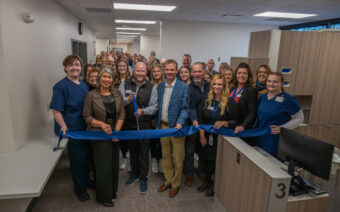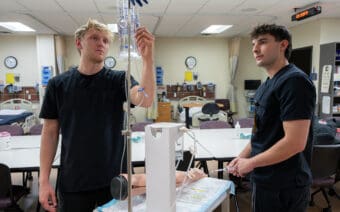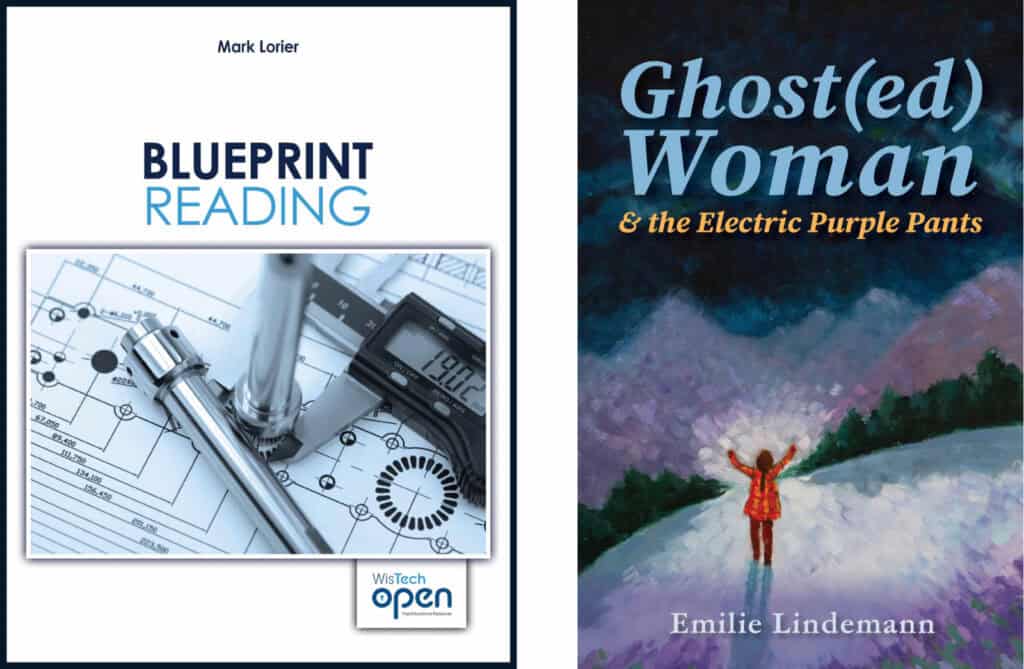
July 28, 2025
CLEVELAND – Lakeshore College faculty members Dr. Emilie Lindemann and Mark Lorier are making a big impact inside and outside of the classroom with their recent book releases.
Lindemann, a member of the communications faculty, recently published “Ghost(ed) Woman & the Electric Purple Pants,” while machining faculty member Mark Lorier authored “Blueprint Reading.”
Lakeshore College Vice President of Instruction Dr. Meredith Sauer said having the work of Lakeshore faculty published “is a huge accomplishment” and speaks to the caliber of expertise they bring to their respective fields and the classroom.
“We are glad to have Emilie and Mark among our dedicated and experienced faculty members at Lakeshore,” she said.
‘A Ghost(ed) Woman & Her Electric Purple Pants’
Published by Two Rivers-based Fresh Water Press, Lindemann said “Ghost(ed) Woman & the Electric Purple Pants” is a chapbook – a small paperback booklet containing poetry – that explores the distortion of time she experienced during the COVID-19 pandemic, the loss of her sense of self and related emotions she felt while moving through a transitional period of her career and life.
“At that time, I was working at Silver Lake College in Manitowoc, which had changed its name to Holy Family College,” she said. “It was a small liberal arts college and [I] very much felt a sense of home [there]. There were small classes, [and I] felt connected to my colleagues.”
However, obviously, when the COVID-19 pandemic hit, Lindemann said classes were transitioned to online.
“My brain couldn’t keep up with all these changes that were happening,” she said. “But there was still this idea that we would be back the next semester and would get to see our colleagues again; we would see our students in the classroom.”
As the pandemic progressed and health recommendations evolved, Lindemann said that didn’t happen.
Furthermore, she said she soon learned her workplace of 10 years wouldn’t just be staying remote – in August 2020, college leaders announced it would close for good.
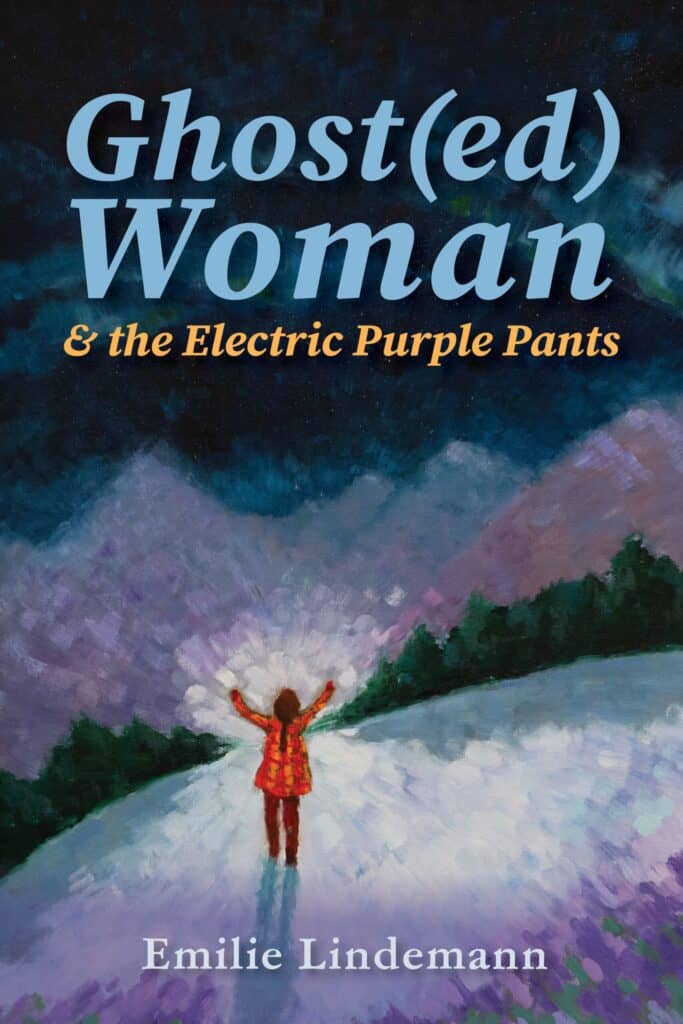
Lindemann said she jumped into action and started applying for other jobs, but she also grappled with a sense of being “stuck” and there being a distortion of time.
Though she was later hired as an adjunct instructor for an in-person class as well as an online class – work she was grateful for – Lindemann said the limitations of each situation left her feeling like a ghost.
She said she couldn’t fully interact with students remotely or with those who were masked in the classroom, and as an adjunct instructor, she wasn’t able to bond with other staff as would have happened under normal circumstances.
Lindemann said she worked through the uncomfortable feelings by immersing herself in nature and in her writing.
“I [couldn’t] help but write, as I kind of process my day and have my journal,” she said. “During that time, I was recording or writing little snippets that would become poems.”
Lindemann said she compiled about 25 poems for the chapbook, and often writes in a series – writing poems that work together to suggest a narrative or create a related theme.
In this case, she said her concept began with her “ghosted woman” poems.
Many of them, Lindemann said, are about experiencing a connection in nature, finding comfort in dreaming and creativity and daring to wear an “out there” pair of electric purple pants to remind yourself you are still here.
“I love to write poems that are part of a series, so I was bringing them out of my journal and typing them up, making them into poems,” she said.
Lindemann said some of the other poems explore this idea of dreamscape, “whether it’s being in nature and it’s feeling like a moment in a dream, or actual dreams I was having that were a little odd during this time.”
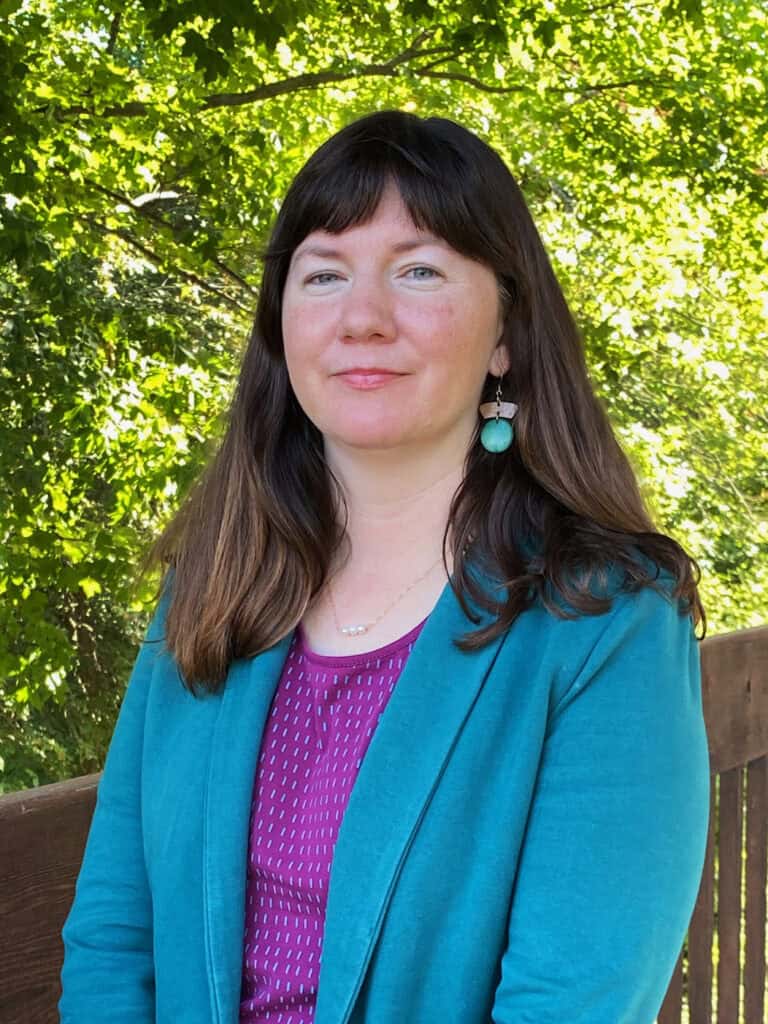
She said she also included poems along the themes of time distortion, too.
“I gradually started shaping it into a chapbook,” she said.
Though many of the poems were written in 2020, Lindemann said she added more along the way which fit within the established themes.
Lindemann said she submitted her work to different presses through their calls for submission, received feedback and grew the collection over time.
When a new press based in Two Rivers – Freshwater Press – had an open call for submissions, she said she sent in her completed manuscript, which was then selected as one of three books Freshwater is publishing this year.
“I feel like ‘empowering’ might be a cliche word, but it’s really exciting to connect with readers and listeners who actually can relate to these feelings,” she said.
‘Blueprint Reading’ makes learning more streamlined
Published earlier this month by WisTech Open – the Wisconsin Technical College System’s hub for openly licensed educational resources – Lorier said his book, “Blueprint Reading,” is a free textbook designed to introduce students to the essential skills of interpreting technical drawings, diagrams and schematics for a variety of industries, including construction, manufacturing, engineering and maintenance, guiding fabrication, construction and equipment assembly processes.
Lorier said his book gives students just what they need, getting down to the brass tacks of blueprint reading without the extra fluff that can sometimes come in other textbooks.
“We [have] used the same book for a long time and really hadn’t seen much change in it, as far as some of the industry updates, things like that,” he said. “And actually, recently, we were having issues this last time getting… the books from the publisher. So, we were looking at maybe doing something different, and this opportunity came across.”
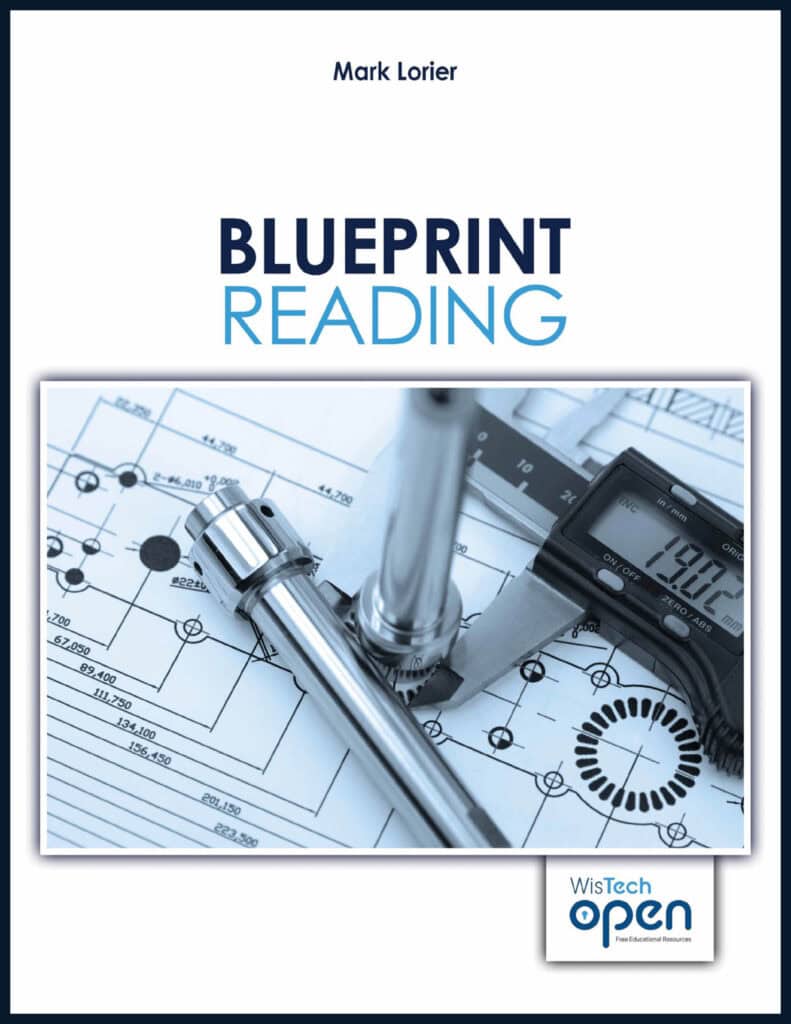
Lorier said he was asked if he’d be interested in writing his first open resource book, and he accepted.
The book’s intention, he said, is to help students interested in careers in the trades and engineering learn to interpret technical drawings with symbols, dimensions and through hands-on exercises.
“[The book] begins with just the overview of drawings and how they’re used in industry,” he said.
In the industry today, Lorier said, that use typically includes digital components.
“It’s using solid models, and it walks through the process of how that first initial design [is created],” he said. “And then [the book takes the student] through a lot of the different views of the drawing.”
In addition to learning about the relationship among the views, Lorier said the textbook also includes explanations for the many different lines students will find on drawings and what they mean – whether it’s a solid line, dashed line, center line, etc.
Furthermore, Lorier said the book aims to help students better understand dimensions and how to choose the appropriate view to find the information they’re seeking, like specific measurements.
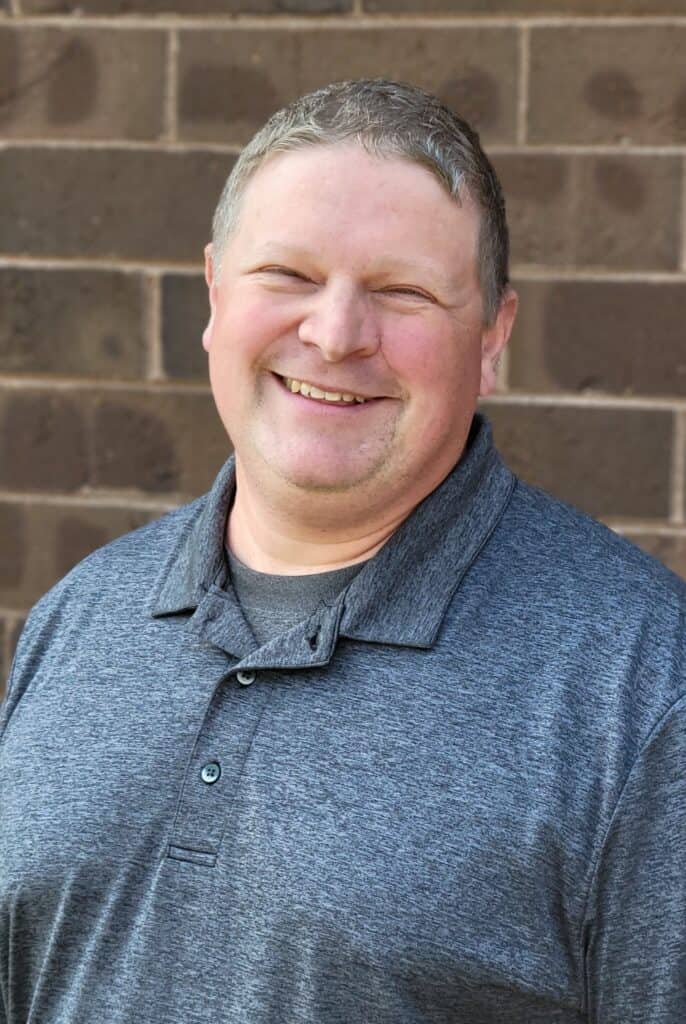
Since he has been reading technical drawings for quite some time, Lorier said when he looks at a blueprint, he can easily visualize it, and wants students to gain that same innate ability.
As he summarizes in the book’s introduction, Lorier said the ability to extract key details from drawings and visualize complex designs is a fundamental skill for success in technical fields.
“[It’s] helping the students quickly look at it and visualize what they’re looking at,” he said.
A gratifying end to the process
Agreeing, both Lorier and Lindemann said with full plates including their “9-to-5” careers and familial obligations, writing a book doesn’t just happen overnight.
Lorier said he spent an entire summer working on his book, which included manipulating software to make the drawings he needed, since the software he used wasn’t designed for his specific needs.
However, he said the hard work was worth it, because the book gives his students and others exactly what they need to succeed.
“It consumed most of my time,” he said. “A lot of times, once everyone was in bed, I’d come back out and start working on it, so it was good to be done.”
Lindemann said her experience in writing her chapbook was a bit different.
In balancing work, life and her art form, she said poetry can be worked on in smaller snippets of time, making it easier to weave in alongside life’s many responsibilities.
But, similarly to Lorier’s experience, she said the result of its completion was deeply gratifying.
“I think it is really affirming or even uplifting, even though some of the experiences in here are [about] feeling the loneliness, to connect with people who might say, ‘Wow, you know, I really could relate to that one poem you read,’” she said. “And then the reader… they [may] experience it a little bit differently. They might interpret it differently from what I intended, and that’s okay.”
“Blueprint Reading” is available now and can be accessed at wistechopen.org, with print copies likely becoming available in September.
More details on “Ghost(ed) Woman & the Electric Purple Pants” are available at freshwaterpressllc.com.
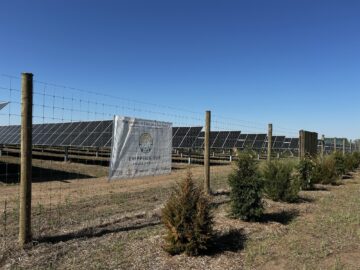 Chippewa Sun rises with solar energy momentum
Chippewa Sun rises with solar energy momentum For Johnson, ATHENA Leadership Award a shock, yet validating
For Johnson, ATHENA Leadership Award a shock, yet validating

